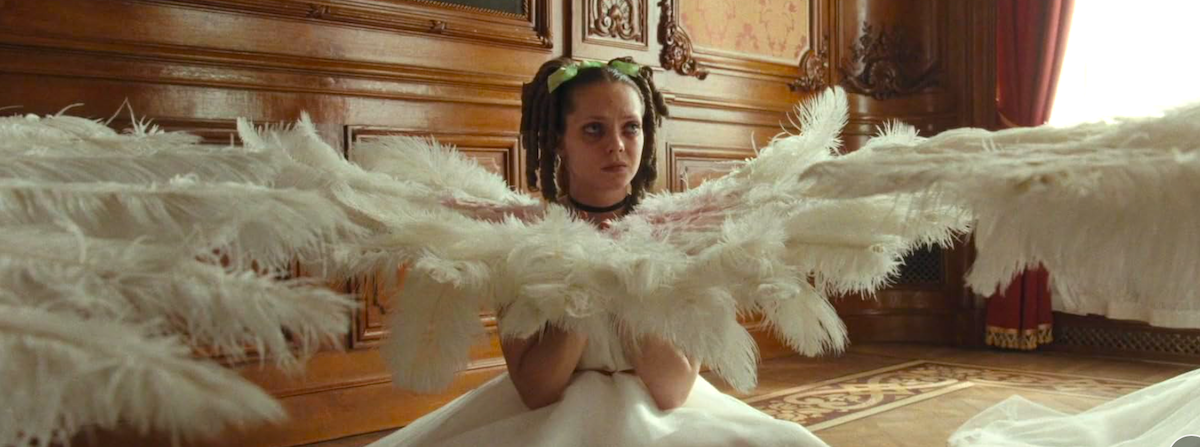The fairy tale is a tricky genre for viewers and filmmakers. The type most familiar to contemporary audiences comes through a Disney Studios shaping mechanism: lovable, cleaned up, and stylized.
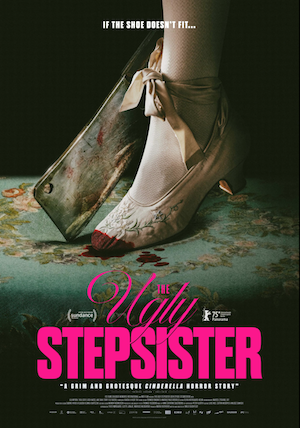 But even in those films, sinister elemental forces and characters are just beneath the surface or around the corner. In The Ugly Stepsister, the latest movie from Norwegian writer/director Emilie Blichfeldt (How Do You Like My Hair?), the sinister is brought into everyday life in a strange blend of realism and fantasy.
But even in those films, sinister elemental forces and characters are just beneath the surface or around the corner. In The Ugly Stepsister, the latest movie from Norwegian writer/director Emilie Blichfeldt (How Do You Like My Hair?), the sinister is brought into everyday life in a strange blend of realism and fantasy.
Billed as comedy/horror, the comedy is sometimes hard to grasp while the horror is the worst sort: an oppressive culture so pervasive and human-driven that the grisly perpetrations of characters on each other and themselves are overwhelming. While this movie is extreme with shocking events, graphic imagery, and hard-to-forget scenes, it is also a valuable piece of intensely artistic filmmaking and a powerful critique of external and internalized patriarchal society.
The story, disorienting at first to anyone familiar with the classic Cinderella tale, is viewed from the perspective of one of Cinderella’s “ugly” stepsisters, Elvira (Lea Myren).
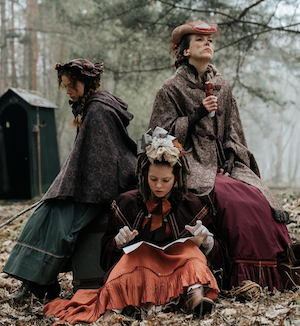 Elvira’s mother Rebekka (Ane Dahl Torp) marries a widower, who promptly dies and leaves his new widow land rich and money poor, with her own two daughters and her new stepdaughter Agnes (Thea Sofie Loch Naess), nicknamed Cinderella, to look after.
Elvira’s mother Rebekka (Ane Dahl Torp) marries a widower, who promptly dies and leaves his new widow land rich and money poor, with her own two daughters and her new stepdaughter Agnes (Thea Sofie Loch Naess), nicknamed Cinderella, to look after.
The story takes place in a typical fairy tale setting, the Kingdom. When the local heartthrob regent Prince Julian (Isac Calmroth) announces a ball offering the most promising virgins in the country the chance to become the prince’s bride, Elvira’s trials are set into motion. Rebekka sees an opportunity, and a relentless and horrific quest to make her daughter the most beautiful girl the prince will meet begins.
Before Rebekka’s decision and her ruthless obsession begins, we see scenes of Elvira trying to console and befriend Agnes, who lashes out at her in her grief over her father’s death. Here is a difference in Blichfeldt’s telling: before Rebekka learns of the ball, both Rebekka and Elvira are empathetic. The direction and storytelling invite the audience to identify with both of them.
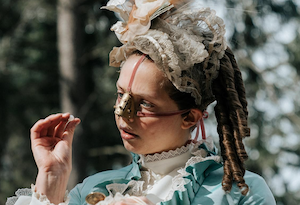 Once the contest becomes the focus, however, Elvira slowly transforms into the evil stepsister that we all know, and whatever empathy is left for her is of a different sort as she becomes a capital venture and an aesthetic project of her mother.
Once the contest becomes the focus, however, Elvira slowly transforms into the evil stepsister that we all know, and whatever empathy is left for her is of a different sort as she becomes a capital venture and an aesthetic project of her mother.
The movie proceeds into a medieval torture chamber of treatments and regimens intended to transform Elvira into something even beyond the “natural” beauty of Agnes/Cinderella—a beauty that is dictated by patriarchal male standards. But even by these standards, Elvira is plain and awkward rather than outright unattractive. She is subjected to grisly alterations on her nose, eyes, body, and feet. She is humiliated and degraded, and her mother funds all of it with her speculative future fortune.
In a pivotal scene in the movie, one of the beauty brokers (a woman) gives Elvira a grotesquely alive version of Ozempic, but notes that Elvira is beautiful inside; they just have to make the outside match. The irony of the film is that the sum of the treatments corrupts both outside and inside, turning Elvira into a monster.
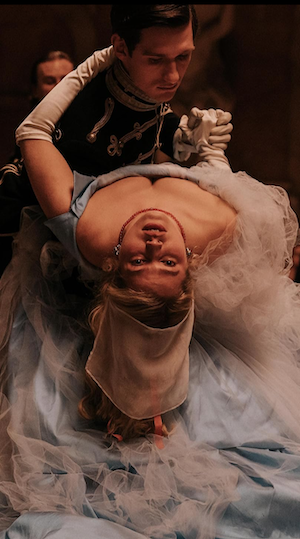 As for Cinderella, when we see her ride off with the Prince, it’s clear that “happily ever after” for both of these girls is the real fairy tale.
As for Cinderella, when we see her ride off with the Prince, it’s clear that “happily ever after” for both of these girls is the real fairy tale.
The other mostly silent stepsister, Alma (a brilliantly subtle performance by Flo Fagerli), seems to be the only character who retains her humanity in the film. She doesn’t get involved, and is the true beauty and answer to the Agnes/Elvira dichotomy.
The “evil stepmother” Rebekka could be understood as the villain as usual here, but it’s clear the real antagonist is her internalization of patriarchal values, and phallic imagery is inserted seamlessly into key shots.
Extremely dark satire is a better designation for this film than comedy/horror, and satire is not earning its title unless it pushes extremes to the point that the audience is chuckling while being repulsed. The Ugly Stepsister delivers these extremes in abundance.
Even with beautiful cinematography, great costumes and sets, visionary storytelling, and outstanding acting, the film is challenging to watch. But it’s rich in value. It’s the most “indie” independent film to grace small theatres in decades, and well worth a mindful screening.
Editor’s Note: The Ugly Stepsister is now playing at The SLO Film Center at the Palm Theatre. It screened at the 2025 SLO International Film Festival in April.
